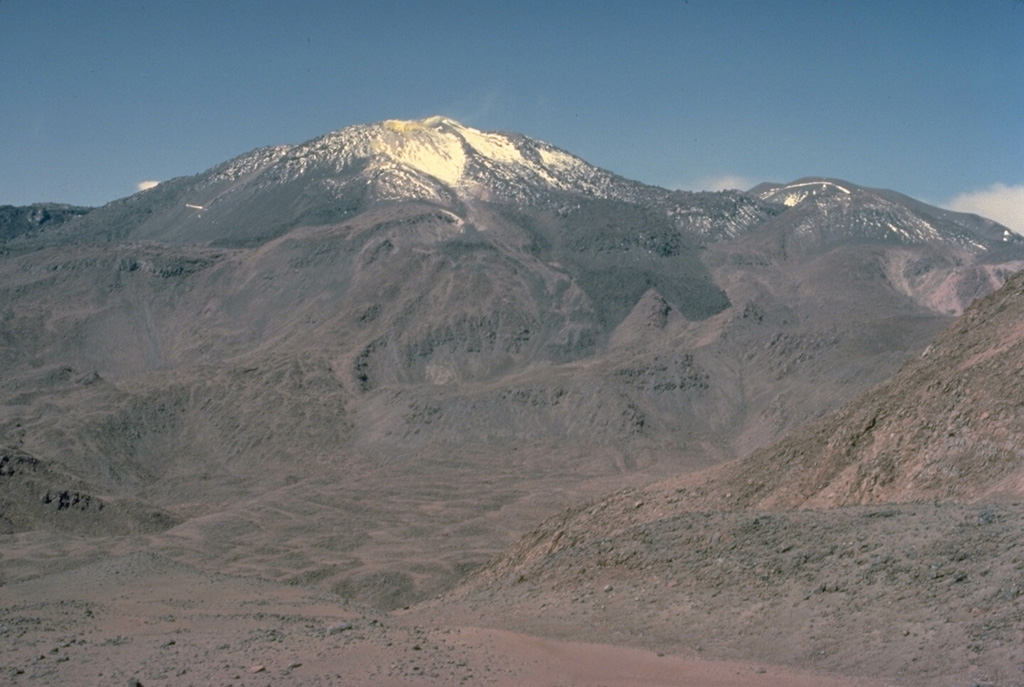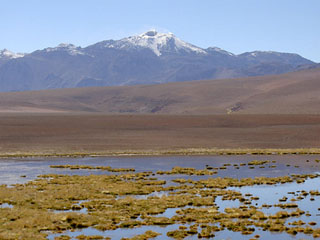Global Volcanism Program | Image GVP-04822

Volcán Putana, seen here from the NW, is part of large, roughly N-S-trending volcanic complex that was formed almost exclusively by lava effusion. Vigorous fumarolic activity is visible for many km from the summit of Putana volcano and sulfur is mined in the summit region. The main edifice consists of accumulated postglacial lava flows mantling an older pre-Holocene volcano. The youngest lava flows are viscous and rarely extend more than 3 km. Little is known of the eruptive history of this volcano.
Copyrighted photo by Katia and Maurice Krafft, 1983.
Copyrighted image used with permission. All Rights Reserved. Contact photographer for any usage requests.

Putana
